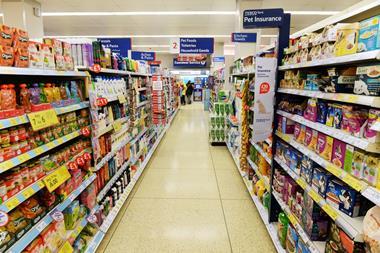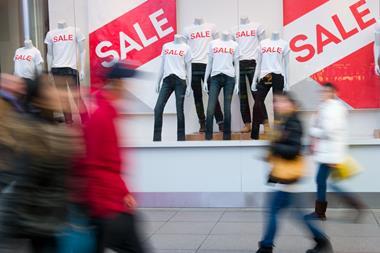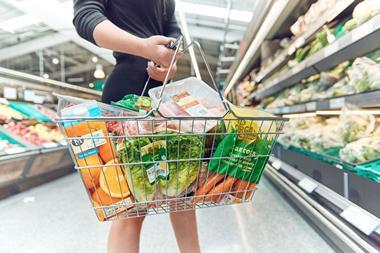Shop prices fell slightly in August, driven by weak consumer spending and “stiff competition” between retailers.
Shop prices fell 0.4% in August, which made for the fastest rate of decline since June 2018, according to the latest BRC-Nielsen Shop Price Index.
Food inflation eased somewhat to 1.6%, down from 1.7% in July, while fresh-food inflation accelerated from 1.2% in July to 1.4% in August.
Inflation of ambient food prices, however, slowed, down from 2.4% in July to just 1.8%, which was well below both the 12- and six-month averages.
The index found that overall prices “were pushed further into deflationary territory by non-food goods that saw prices decline at a faster pace in August”, and that of the seven non-food categories, three were deflationary.
It also found that promotional activity by supermarkets slowed down the rate of price increases across non-alcoholic beverages, sugar and confectionery and bread and cereals.
BRC boss Helen Dickinson said: “Consumers were the real winners this month as prices fell at their fastest rate in over a year. Prices of non-food goods fell at a faster rate than both the previous month and the 12-month average, while food inflation eased slightly due to higher levels of discounting from supermarkets.
“Weak consumer spending and stiff competition has kept prices down in the UK; however, a disruptive no-deal Brexit, which would raise the cost of imported goods, could reverse this trend. In the interests of both consumers and retailers, the Government must redouble its efforts to find a workable agreement with the EU that would avoid a no-deal scenario.”
Head of retailer and business insight at Nielsen, Mike Watkins, said: “August is often a difficult month for retailers, made more challenging this year by unseasonable weather early in the month, and we have seen the return of vouchering by many supermarkets and some non-food retailers bringing forward end-of-season discounts to help drive sales.
“Consumers remain uncertain about when and where to spend but the good news is that any inflationary cost pressures that may be building in the food supply chain have not yet reached shop prices.”


























No comments yet